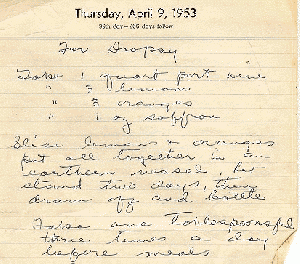Folk Medicine, Amish and Swiss-Pennsylvania German
Mennonite and Amish emigrants from Europe in the 18th and 19th century brought to America a storehouse of remedies for ailments. Before the days of modern medicine, folk remedies flourished, often bringing relief and even cures to the sick and ailing. The use of teas, ointments, tonics, salves, liniments, and poultices was common in the average household. Oral tradition as well as neatly penned recipes handed down from generation to generation have kept folk medicine alive in many Amish and Mennonite communities. Dozens of remedies are readily available for such ailments as rheumatism and arthritis as are brews and bitters for constipation and itch. Specially prepared health manuals, articles in farm almanacs, and notices on herbal medicines in The Sugarcreek budget (a weekly newspaper for Amish and Mennonite readers) augment the information available.
While remedies are available for most common ailments, the literature also speaks to specialized problems such as sterility and impotence and to complications related to the change of life. A popular health manual among the Amish gives this remedy for prostate problems: After age 40, men often suffer from congestion of the prostate gland. To relieve this cut corn silk from the tip of the sheath surrounding the corn cob, of a half dozen ears of corn, cook it into a tea and drink three times daily for a week. Use fresh corn silk daily. If this does not help, try pumpkin seeds. These stimulate male hormone production and also act as a vermifuge or worm killer. Many health food stores carry pumpkin seed oil, which may be taken in small amounts, however, chewing fresh seeds is better.
In recent years, Amish and Mennonites have engaged in experimental cures for cancer. Laetril and the Hoxsey Cancer Clinic have had their effects on folk medicine. In search for better health, Amish have been known to travel great distances to visit "hot springs" and special quasi-chiropractic centers. Some Amish have spent a week sitting in old abandoned uranium mines to escape arthritic pains. Many communities maintain country stores stocked with natural health foods and vitamins along with juicers and vibrators, all as part of an effort to keep the body healthy. Herbal medicine has flourished, making use not only of the American and European practices, but also some exotic Oriental and South American jungle herbs.
Folk medicine, now as in ages past, brings a unique assortment of potions, generally prepared in the home, to afford healing to the mind and body of the believer.
See also Brauche; Faith Healing
Bibliography
McGrath, William R. Amish Folk Remedies for Plain and Fancy Ailments. 1981.
Hostetler, John A. Amish Society. Baltimore, MD: Johns Hopkins University Press, 1980: 313-32.
| Author(s) | Samuel L Yoder |
|---|---|
| Date Published | 1989 |
Cite This Article
MLA style
Yoder, Samuel L. "Folk Medicine, Amish and Swiss-Pennsylvania German." Global Anabaptist Mennonite Encyclopedia Online. 1989. Web. 3 Apr 2025. https://gameo.org/index.php?title=Folk_Medicine,_Amish_and_Swiss-Pennsylvania_German&oldid=102213.
APA style
Yoder, Samuel L. (1989). Folk Medicine, Amish and Swiss-Pennsylvania German. Global Anabaptist Mennonite Encyclopedia Online. Retrieved 3 April 2025, from https://gameo.org/index.php?title=Folk_Medicine,_Amish_and_Swiss-Pennsylvania_German&oldid=102213.
Adapted by permission of Herald Press, Harrisonburg, Virginia, from Mennonite Encyclopedia, Vol. 5, pp. 304-305. All rights reserved.
©1996-2025 by the Global Anabaptist Mennonite Encyclopedia Online. All rights reserved.

